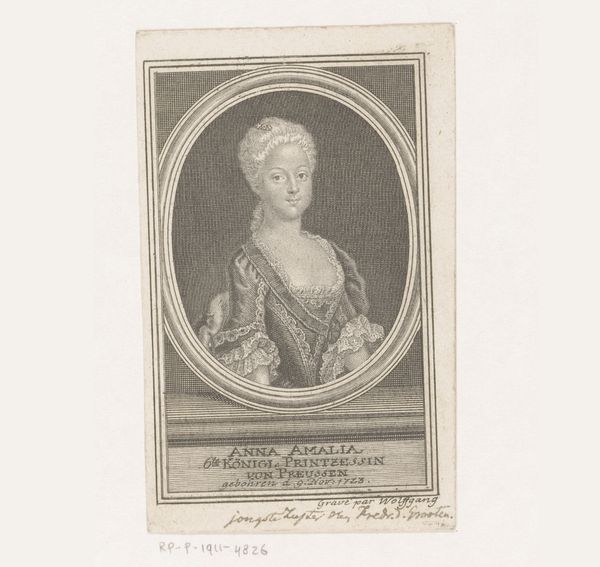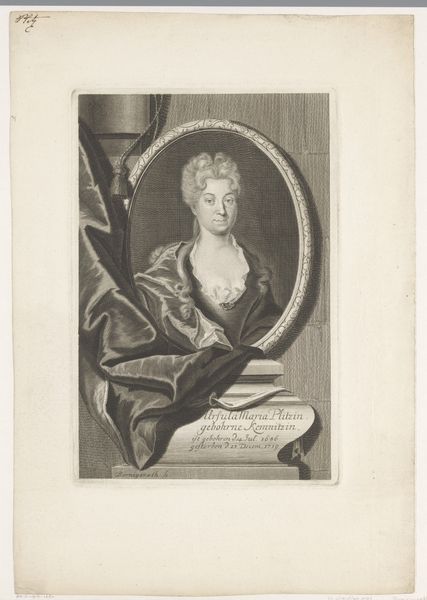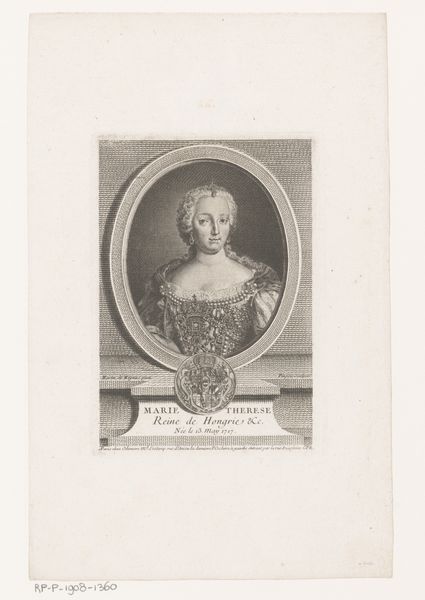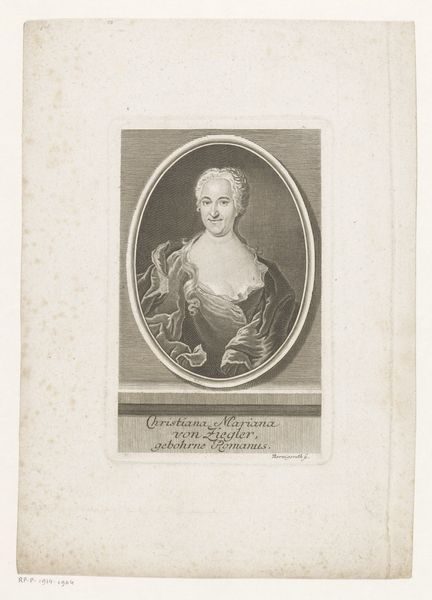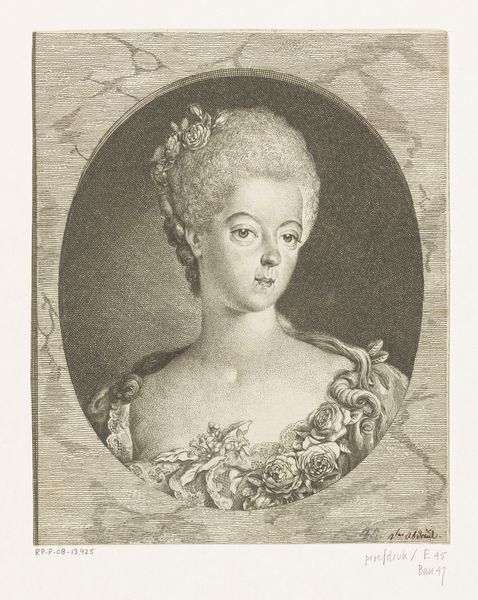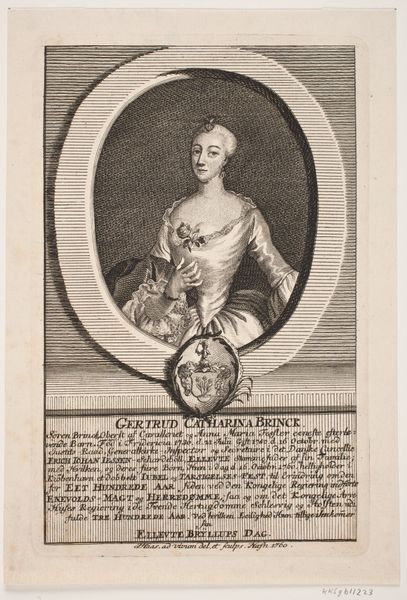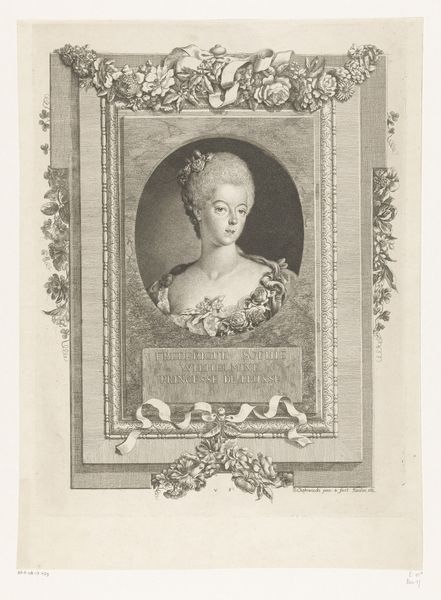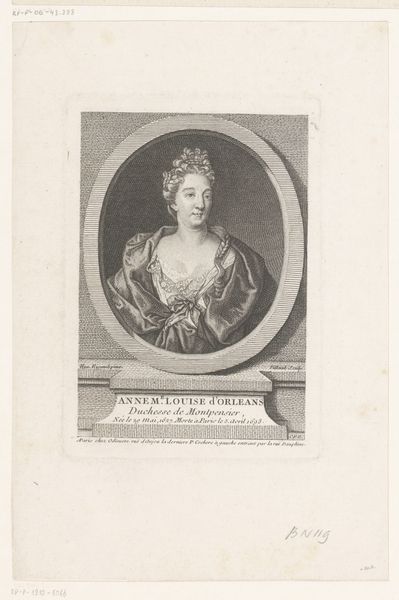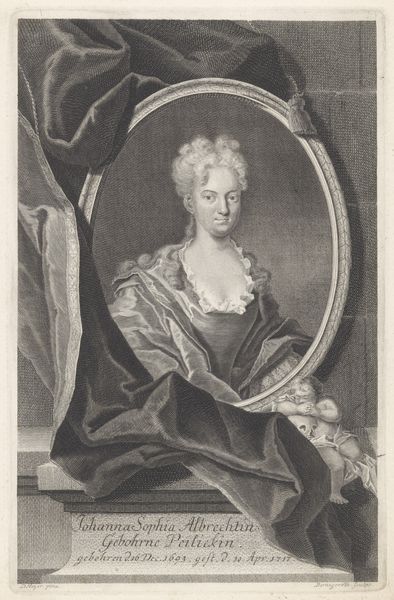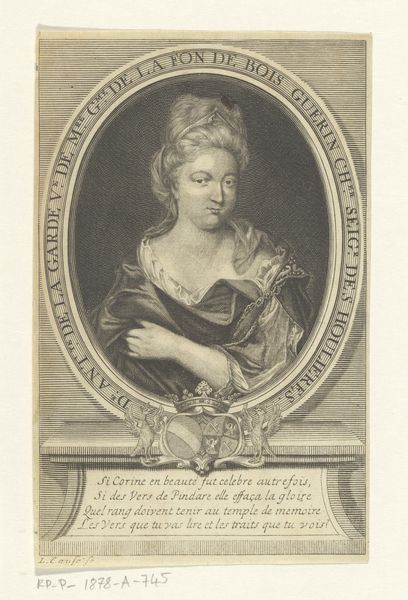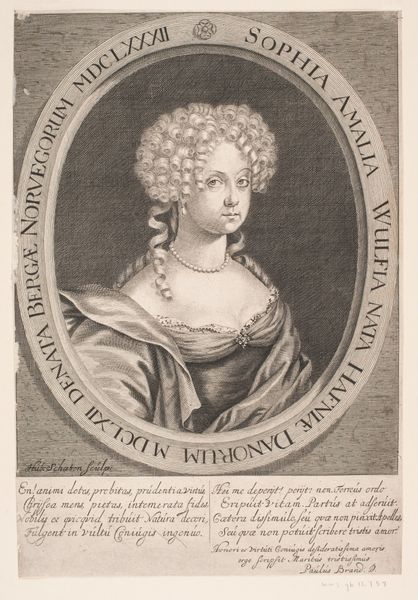
Portret van Philippina Charlotte, prinses van Pruisen 1736 - 1775
0:00
0:00
print, engraving
#
portrait
#
baroque
# print
#
engraving
Dimensions: height 102 mm, width 63 mm
Copyright: Rijks Museum: Open Domain
Curator: Here we have a portrait of Philippina Charlotte, Princess of Prussia, made sometime between 1736 and 1775. The artist was Gustav Andreas Wolfgang, and the medium is engraving. Editor: Immediately I’m drawn to the formality. It feels very contained and almost fragile because it's an engraving, yet there's this powerful essence radiating from her eyes. Curator: Absolutely. Engraving as a process requires meticulous work, each line carefully etched to build form and convey detail. It's a real contrast—the precision required for the medium highlighting the free spirit that the artist hoped to capture of the princess. Editor: Which brings me to think of the role of art in reinforcing social order at the time. Portraits like this are rarely ever neutral documents; it is an act of declaring status. I think the princess had to work hard to navigate this role. Curator: Well, consider that printmaking allowed for wider circulation of imagery than painted portraits. This engraving helped broadcast the princess's image and, consequently, the prestige of the Prussian court. In its material form, it would travel, exist as multiples, perhaps be subtly or dramatically recolored as it moved between different owners. So, a fairly standard form takes on incredible variety. Editor: True, and that mass distribution—makes it quite radical, doesn’t it? Taking the royal image to a wider audience—even if that audience still consisted mainly of elites. It also raises questions about the work involved; so much focused skill must have gone into each and every reproduction. Curator: You can almost feel the labor, right? And doesn't it spark some wonder at how our perception changes knowing about all the unseen work and craft that helped form and distribute her likeness? Editor: Definitely! Thinking about the circulation of this image helps us reimagine our relationship with those who are portrayed, allowing us to engage beyond our inherited associations. It also prompts curiosity around the circulation routes it traversed as it traveled between its initial site and the museum archive! Curator: Yes, and seeing art in this light, we are offered something unique, seeing its story woven across technique, the individual, and cultural impact. Editor: Precisely. Materiality meets spirit, revealing how profoundly art and labor contribute to the shape and spirit of a period!
Comments
No comments
Be the first to comment and join the conversation on the ultimate creative platform.
